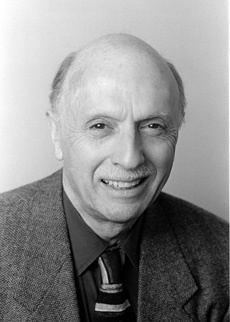Name Allen Forte Role Musical Artist | ||
 | ||
Awards Guggenheim Fellowship for Humanities, US & Canada Books The Structure of Atonal M, Introduction to Schenker, The American popular b, The atonal music of Anton We, The harmonic organizati Similar People George Perle, Milton Babbitt, Anton Webern, Carl Schachter, Richard Taruskin | ||
Allen forte documentary music makes a better person
Allen Forte (December 23, 1926 – October 16, 2014) was an American music theorist and musicologist. He was Battell Professor Emeritus of the Theory of Music at Yale University and specialized in 20th-century atonal music and music analysis.
Contents
- Allen forte documentary music makes a better person
- How to become uncommonly effective allen forte tedxsouthwesternau
- Early life and education
- Academic career
- Publications
- Honors and awards
- Personal life
- References
How to become uncommonly effective allen forte tedxsouthwesternau
Early life and education
Forte was born in Portland, Oregon. At the age of ten he appeared "on a [local] radio show as a solo pianist among a bevy of similarly youthful performers," where he played the music of Cole Porter and others. He was in the US Navy and served in the Pacific Theatre toward the end of World War II.
Afterwards, he relocated to the New York City to study music at Columbia University. There, he studied composition with Otto Luening and Vladimir Ussachevsky, although his main interests were forming around music theory and analysis.
Academic career
In the late 1950s, Forte taught music at various New York institutions: Columbia University Teachers College, Manhattan School of Music, and Mannes College of Music. In fall 1959 he began his long-term appointment at Yale, where he eventually became the Battell Professor of Music (retiring in 2003). He was influential there as both scholar and teacher, and in the latter capacity served as advisor to seventy-two Ph.D. dissertations completed between 1968 and 2002. (Yale did not offer a Ph.D. in theory for the first several years Forte was there.) A list of all his advisees and their dissertation titles appears in David Carson Berry, "The Twin Legacies of a Scholar-Teacher: The Publications and Dissertation Advisees of Allen Forte," Gamut 2/1 (2009), 197-222. The list is ordered chronologically by submission, and each advisee is given an "FA" number to denote his or her ordering among the advisees. ("FA" stands for “Forte Advisee,” and is also a retrograde of Allen Forte's initials.)
Publications
Forte is well known for his book The Structure of Atonal Music (1973), which traces many of its roots to an article of a decade earlier: "A Theory of Set-Complexes for Music" (1964). In these works, he "applied set-theoretic principles to the analysis of unordered collections of pitch classes, called pitch-class sets (pc sets). [...] The basic goal of Forte's theory was to define the various relationships that existed among the relevant sets of a work, so that contextual coherence could be demonstrated." Although the methodology derived from Forte’s work "has had its detractors ... textbooks on post-tonal analysis now routinely teach it (to varying degrees)."
Forte published analyses of the works of Webern and Berg and wrote about Schenkerian analysis and music of the Great American Songbook. A complete, annotated bibliography of his publications appears in the previously cited article, Berry, "The Twin Legacies of a Scholar-Teacher." Excluding items only edited by Forte, it lists ten books, sixty-three articles, and thirty-six other types publications, from 1955 through early 2009
Forte was also the editor of the Journal of Music Theory during an important period in its development, from volume 4/2 (1960) through 11/1 (1967). His involvement with the journal, including many biographical details, is addressed in David Carson Berry, "Journal of Music Theory under Allen Forte's Editorship," Journal of Music Theory 50/1 (2006): 7-23.
Honors and awards
He has been honored by two Festschriften (homage volumes). The first, in commemoration of his seventieth birthday, was published in 1997 and edited by his former students James M. Baker, David W. Beach, and Jonathan W. Bernard (FA12, FA6, and FA11, according to Berry's list). It was titled Music Theory in Concept and Practice (a title derived from Forte's 1962 undergraduate textbook, Tonal Harmony in Concept and Practice). The second was serialized in five installments of Gamut: The Journal of the Music Theory Society of the Mid-Atlantic, between 2009 and 2013. It was edited by Forte's former student David Carson Berry (FA72) and was titled A Music-Theoretical Matrix: Essays in Honor of Allen Forte (a title derived from Forte's 1961 monograph, A Compositional Matrix). It included twenty-two articles by Forte's former doctoral advisees, and three special features: a previously unpublished article by Forte, on Gershwin songs; a collection of tributes and reminiscences from forty-two of his former advisees; and an annotated register of his publications and advisees.
Personal life
Forte was married to the French-born pianist Madeleine (Hsu) Forte, emerita professor of piano at Boise State University.
